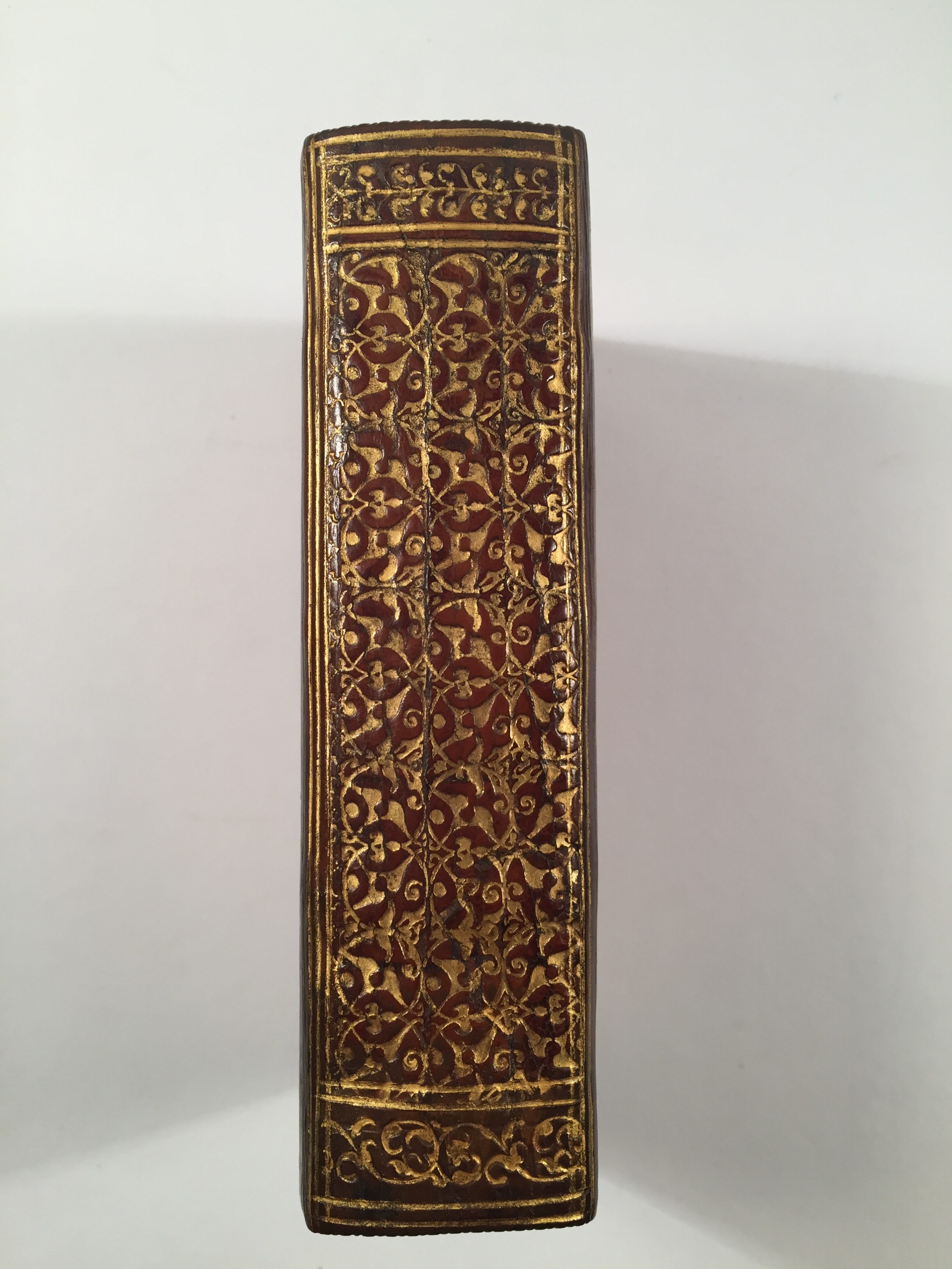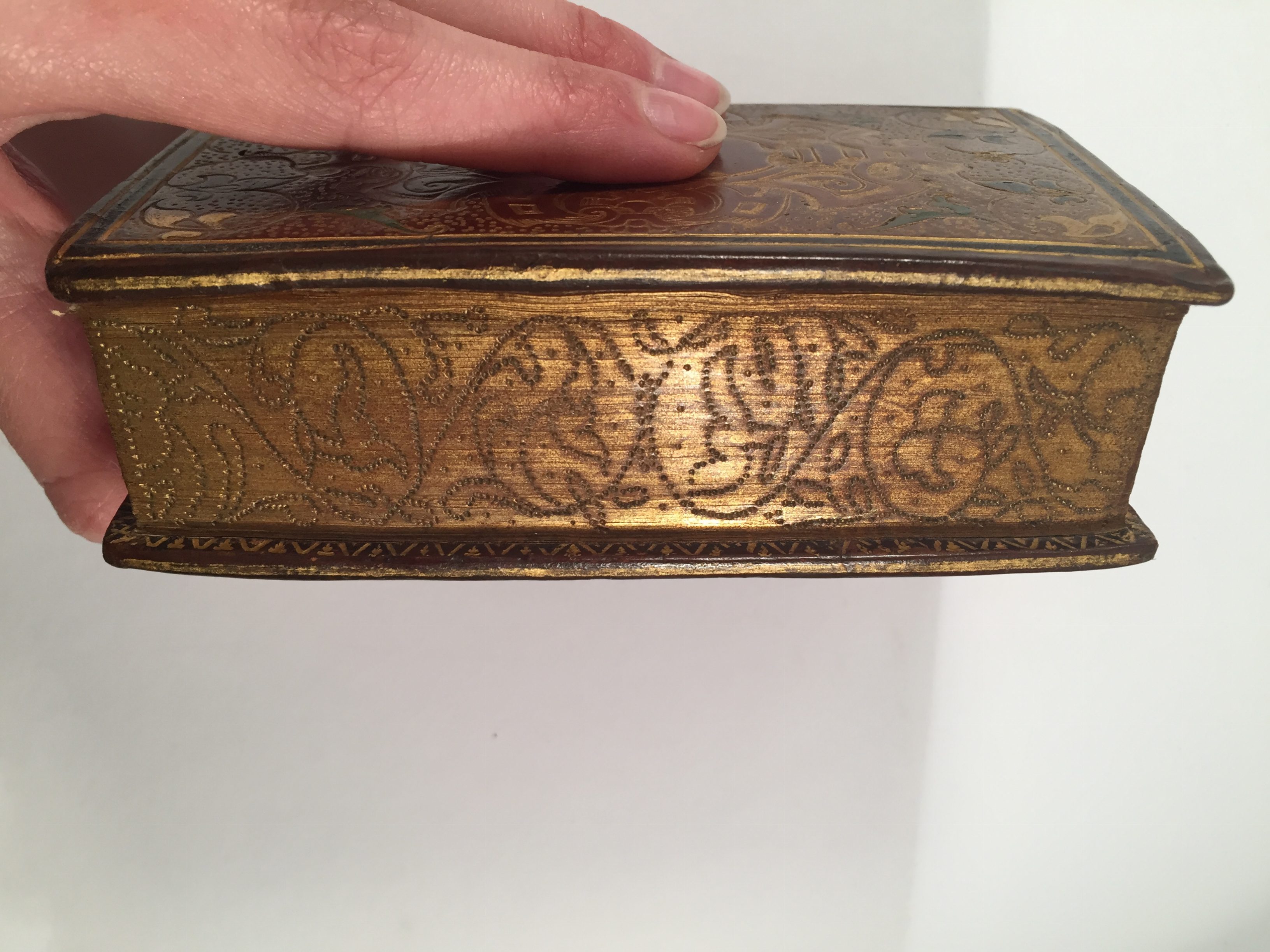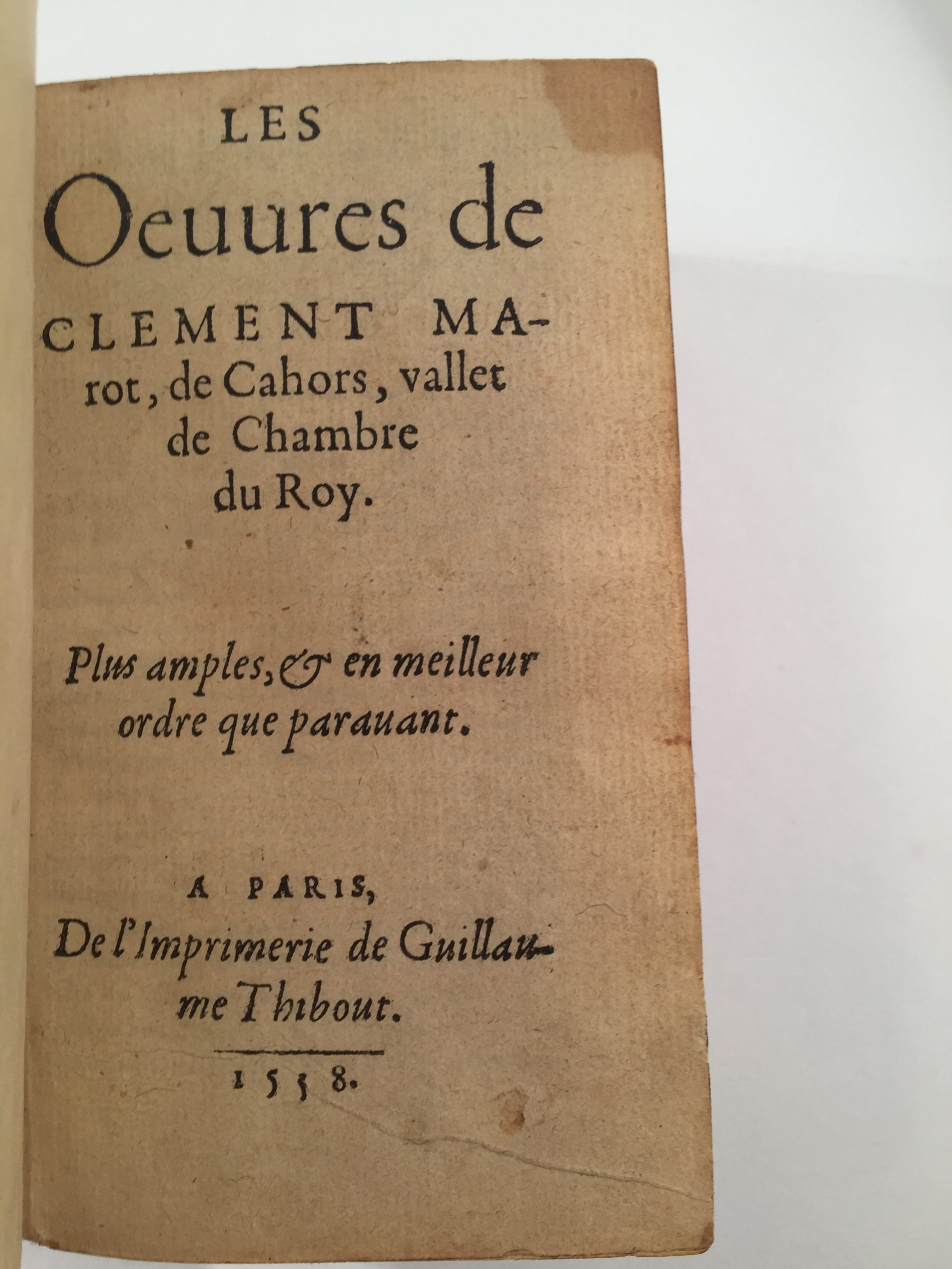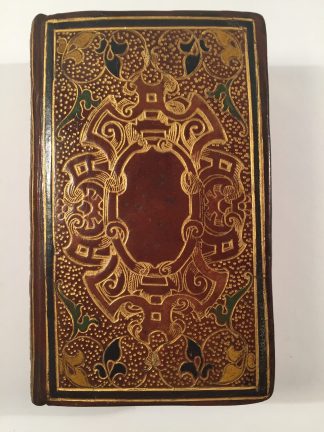MAROT, Clément
LOVELY RENAISSANCE BINDING
Les Oeuvres de Clement Marot, de Cahors… [with] Les Cinquante Deux Psalmes
Paris, De l᾽Imprimerie de Guillaume Thibout, 1558£6,750.00
16mo. ff. 336, 16. [xii], 79 [i] (last blank). sig. a-z8, A-T8, aa-bb8, A8, B4. A-K8. Psalms with a separate title page. Italic letter, some Roman. Small floriated woodcut initials. Light age yellowing, the rare marginal mark or insignificant stain. A very good copy in a stunning contemporary French ‘a la cire’ binding, covers bordered with a double gilt rule filled in black, large central gilt oval with ornate strapwork design, surrounded by scrolled floral tools painted in black, green and yellow, over a gilt pointillé ground, spine double gilt ruled in long, filled with repeated gilt scrolled tools, edges with gilt rule, inner dentelles gilt, all edges richly gilt and gauffered, joints and corners probably (invisibly) restored, later end-papers.
A rare edition of the works of Clement Marot in a stunning contemporary ‘A La cire’ binding of the highest quality. The binding is particularly finely and richly worked for such a small book; it is made up of a large gilt central architectural motif against a background of a semé of pointillé tools. The model for this type of ornamentation may well have been the title-pages with scrolled ornaments which occurred chiefly in Paris and Lyons printing from about 1540. The flat spine is finely worked in an unusual fashion using a ground of scrolled tools. The overall effect is most charming and striking, of very high quality, and in excellent state of preservation. It is very similar in style with the same gilt pointillé ground and coloured floral tools as two binding in the BL database of bookbindings, BL Shelfmark c18a4 and Shelfmark c18a5. Originally part of the Italian desire to recapture the decorative splendour of ancient Rome, such reliures à la cire quickly came to typify the elegance of the French Renaissance. In the middle of the C16 the use of enamelled onlays was the height of French bibliophilic fashion, espoused with enthusiasm by the grandest patrons and practised only by a handful of ‘doreurs sur cire’. “These great artistic creations …. are the highest achievements in the art of bookbinding in the Renaissance period…. and some must be counted among the greatest works of art in the French Renaissance”, (Goldschmidt I p. 104).
Marot is the first distinctively modern French poet and in the madrigal, rondeau, ballad and above all the epigram, is distinctive for his grace and wit. In light verse he is second to none, except perhaps La Fontaine, who acknowledged him as one of his masters, and his style was imitated by Rousseau. His verse is still perfectly intelligible and he is probably the earliest French poet still read with more pleasure than effort. “The one fact that biographical research has placed beyond question is Marot’s stature as the foremost French poet of his time” Robert Griffin. Clément Marot and the Inflections of Poetic Voice.
“What would we give for an English Clement Marot! What would we give for a Renaissance poet of real talent, charm and power who was as fluent and readable as Marot! Such a poet would have shared as closely in the intimacies of the religious life of the English court as Marot did in the life of the courts of the most Christian King and of his sister, Margaret of Angouleme, Queen of Navarre. .. Marot is a good poet and a most influential one; he was renowned for his fine banter. Some of his most enjoyable poems were marked by a sense of fun.. Marot can be enjoyable when he is most profound.” M. A. Screech, ‘Clément Marot: a Renaissance Poet Discovers the Gospel.’
Brunet III 1457. Graesse IV 441. Not in BM STC Fr. C16th, or Tchmerzine. USTC 41578 and 79411.In stock






